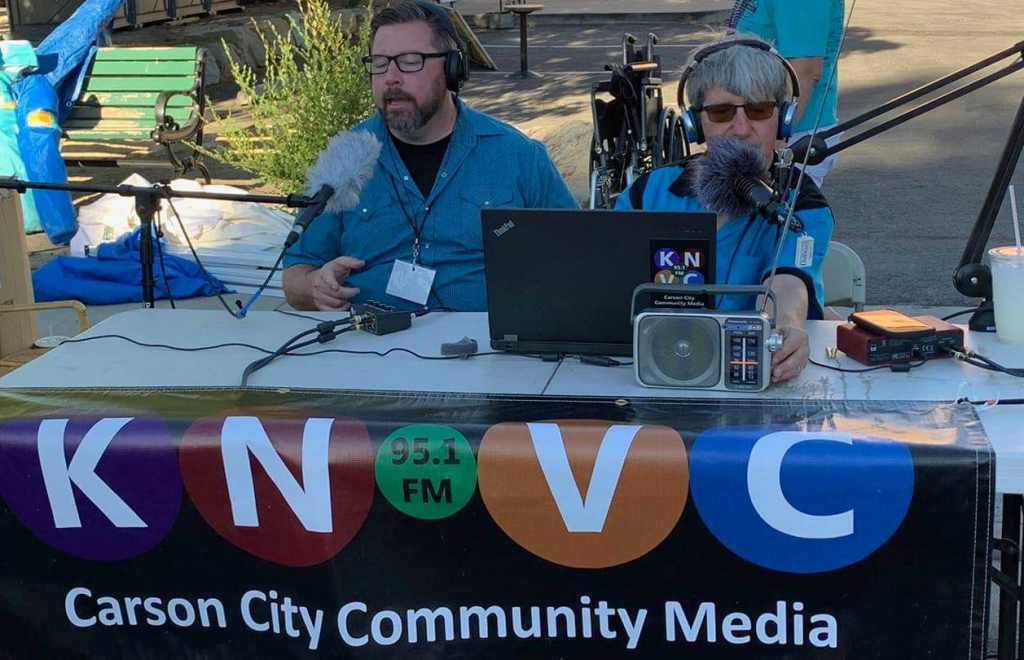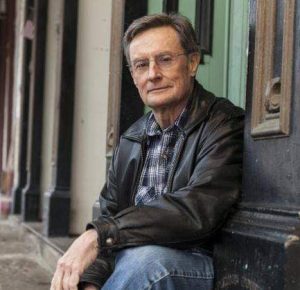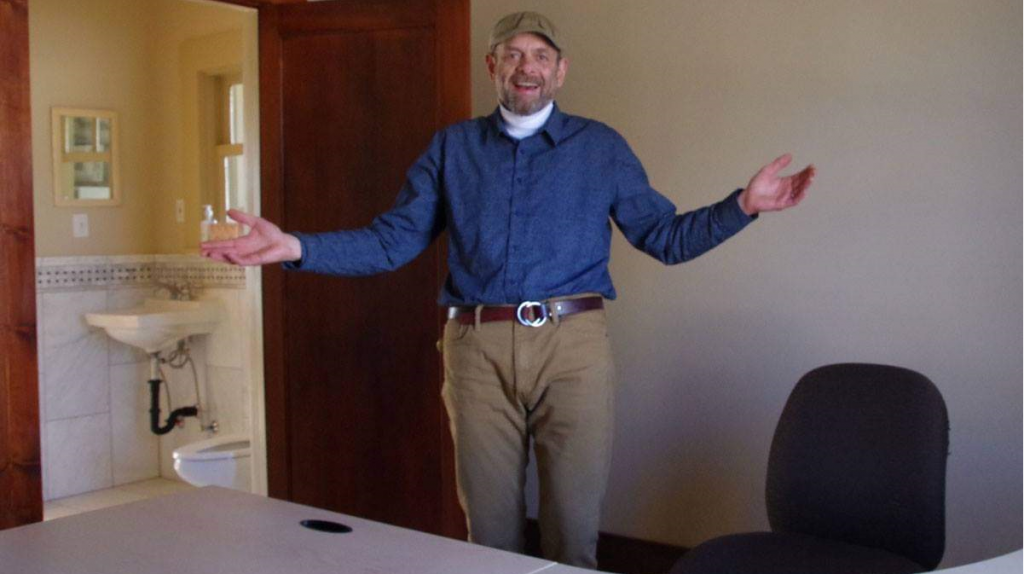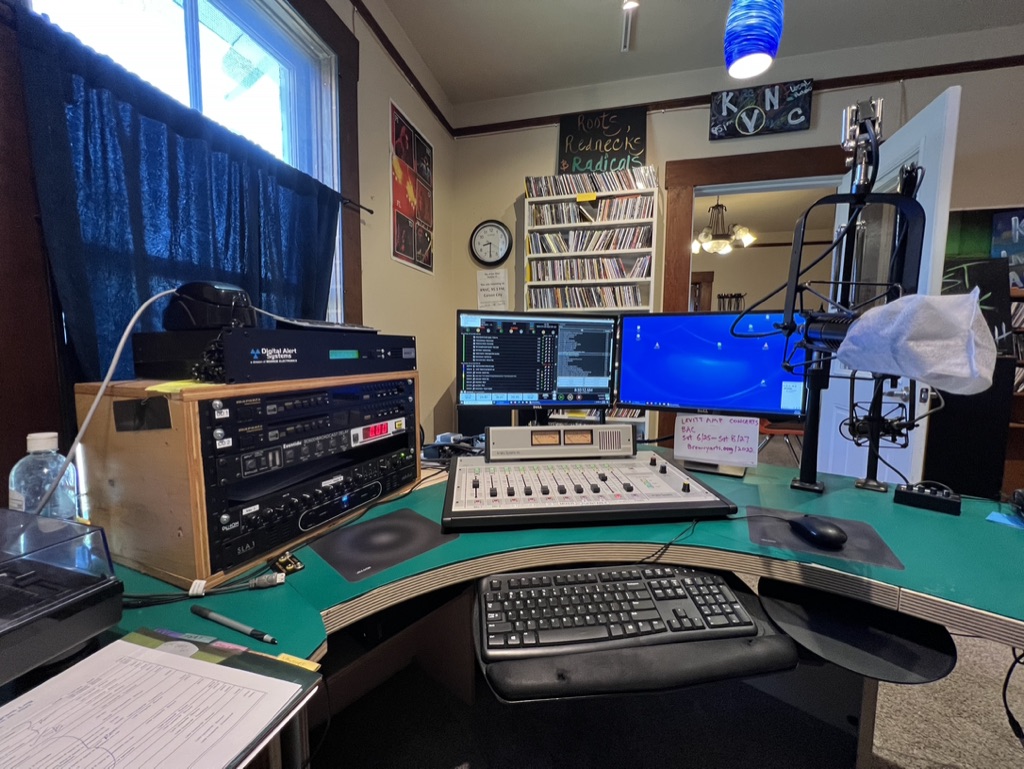
Sometime back in late 2016, Joe McCarthy took a risk.
Carson City’s Brewery Arts Center (BAC) had a construction permit for a community radio station that was set to expire in February 2017. No one was prepared to step up. McCarthy did.
While McCarthy had done some volunteer work for a Reno community station, he had no previous technical experience with either building or running a station. What he did have was a lifetime of service to his city.
McCarthy had lived in Carson City since 1979. He had run the education program for the Nevada State Prison, had been, for over a decade, the Executive Director of the Brewery Arts Center, and had served as a Carson City public official for even longer. And, faced with a soon-to-expire license, McCarthy says, “I just knew it was a good asset.”
Soon McCarthy found supporters and friends, some with the necessary expertise. He set up a 501(c)3, the End of the Trail Broadcast Project, and managed to move the site of the original application allowing for a better antenna location. He enlisted the volunteer support of Brian Bahouth, a former NPR News Director. He laid out money for essential expenses. The Brewery Arts Center offered up Adams House, an historic building large enough for a studio. At an early BAC meeting, he met Joe Bly whose background in sound design made him the perfect advisor for studio construction and equipment purchase.
And so, McCarthy recalls, “We flipped the switch in February, about two days before the construction permit was to expire. And we’re playing rock and roll music in Carson City in 2017.”
Over the following year, work continued, moving the station away from an automated format to its own programming; and, by January, 2018, the station was ready to go live.
Bly remembers the day. “Brian and I went up to the transmitter and plugged in our official line to the station, hooked up the codec and plugged it in, and boom, there was music being generated from our building, our studio. It wasn’t a computer up at the transmitter site. This was actually coming out of our studio.”

Programming for Democracy, Diversity, and Fact
Now in its fifth broadcast year, KNVC is, says Program Manager McCarthy, “a fully functional 24/7 community radio station with lots of good broadcasters,” a station where “local programming is everything.”
Joe Bly, now Program Director, has trained an ever-growing, all-volunteer staff, some, Bly reports, who willingly take on up to 12 hours of programming a week. “They believe,” says Bly, “that the community needs this voice….Commercial broadcasting doesn’t offer anything for a community. Universally, every [community] radio station is a bulwark against the absolute wasteland of commercial radio.”
Station programming, continues Bly, has been designed to serve the area’s diverse population and particularly to address “a lot of the issues that are meaningful to underrepresented people in this community.”
Native American programming airs every day—Native America Calling, weekdays, First Voices Radio and Indigenous in Music with Larry K, weekends. “There are,” says Bly, “so many different communities of Native Americans in the area and…no one was speaking to them….[There’s] a very strong Washoe and Paiute presence here, and they have had no representation in media whatsoever. We’re the only station doing it.” A weekly local LGBTQ program The Sherri P Show—currently on hiatus—offered interviews with community members, amplifying the needs and issues of a group that “has been very much underground.” Humanity Meets Business, hosted by both a therapist and a business consultant, examines issues of maintaining mental health while building your business; and newly added Freedom Through Entrepreneurship complements that work. Pop Culture Kaboom is a three-hour show for gamers, movie buffs, comic fans, and collectors, people who, says Bly, often feel completely alienated from the dominant culture of the area. A computer show provides solutions to personal computer problems, particularly helpful to older residents; a cinema show hosts discussions of the films currently being shown at the local cinema. And, McCarthy adds, their music programming—some of which have garnered national attention—appeals to all tastes. “We’ve got blues programming; we’ve got hip hop; we’ve got jazz, classical….We’re covering the full gauntlet….We give people choices and that’s the beauty of community radio.”
An on-going station initiative is the development and expansion of local news reporting, a project that, McCarthy explains, will be at the center of the station’s fall planning and that McCarthy categorizes as “an effort to create democracy, more vigorous democracy in our community.”
“We’re looking,” says Bly, “at creating a partnership with [local] news entities…[to] supply stories and reporters for us; and, in turn, we give them an outlet so they can present their news on the radio because there is no local audio or visual news here…in the state capitol. There are things going on at the state level just blocks away from our station, and we need to get people with eyeballs and ears in there.”
One particular proposal, inspired, McCarthy explains, by Utah’s Amplify Utah, would align KNVC with the Sierra Nevada Ally, a local print media company where McCarthy serves as Publisher and Managing Editor, in a training program that, McCarthy says, “encourages representative reporting, in other words, reporting on and by the folks that are underrepresented in the news…by folks that look like them, [for example], reporting about what’s going on, on the reservation [by] folks that are connected with the reservation.” Program participants, McCarthy hopes, will be offered the kind of training originated by documentaries.org, a Chicago organization, “where journalists teach the ethics of journalism to local folks who just go to [local] meetings, take notes, interview various participants, and give that information back, either online itself [or] through the KNVC site and the Sierra Nevada Ally, help[ing] the reporters to cover many more beats than they’re able to cover now.”
This emphasis on journalistic training and ethics has, in fact, been a trademark of KNVC’s work. “We try,” says Bly, “to provide scientifically accurate and reasonable programming….Anything that a host says on the air has to be verifiable. We have to be a…trusted source of information….We won’t take anti-vac posts….We won’t take any programming that is vitriolic.”

And Programming for Love of the Medium
This July, KNVC will air the “cataclysmic finale” of The Secrets of Harridge House, their three-year, extravaganza production of live radio theater. Here, the ghosts, monsters and supernatural beings who populate a fictional town in central Nevada speak once again.
Born out of the pandemic and launched on Halloween Eve 2020, the series boasts a cast of over forty people from around the world. The podcast has had some 80,000 downloads; the production has been followed by people from Germany, Spain, Australia, Canada, and all over the US.
Bly, who acts as Technical Director and Audio Editor, says this is “worldwide community theater at its finest….We’re getting Broadway actors who were put out of work by the pandemic, all the way…to a high school person who had never acted before…, [from] professional voiceover talent…to high school students [who] sound young and inexperienced. But that’s part of the magic…This is community radio, community theater…out of literally thin air.”

Pacifica Welcomes Our New Affiliate Partner
While KNVC officially joined the Affiliate Network only this year, the station has been airing Pacifica programming right from its start.
Founder Brian Bahouth was familiar with the network from his years in public radio; and, says McCarthy, that alliance has been sustained by “admiration for Pacifica radio and what it’s done for community radio over its entire lifetime…being there in the beginning.…We were honored to be an affiliate.”
Currently, says McCarthy, the station airs, “a plethora of Pacifica radio programming,…from the Women’s International News Service to obviously Native America Calling every day, First Voices Radio. It’s a real refreshing change from the standard commercial [fare]….And it doesn’t pull any punches. It’s straightforward. This is who we are. This is what you need to at least listen to to give you some perspective in the world….We’re contributing to a conversation [that] otherwise may not have been [here] over the years.”
Photos used with permission of KNVC program manager Joe McCarthy.
